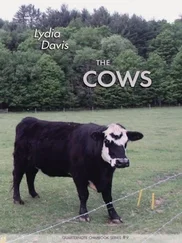Vi’s employers value her work and are loyal to her. After her eighty-fifth birthday party, she went down to Washington to visit her granddaughter and stayed away far longer than she had planned. She was having work done on her teeth that extended week after week. Several months went by without a word from her, her bills piled up, and the telephone company threatened to cut off her phone service. She eventually made a visit back home to pay bills and contact employers, but in all this time no one made a move to replace her. Everyone simply got along as best they could until she was back again. She has been cleaning for the same office, a law office, for thirty years.
One of her longtime employers, an elderly woman, finally entered a nursing home. She complained to Vi that the people there did not know how to make a bed properly or to bathe her. She asked Vi if she would come to the home and continue to take care of her. Vi said she would do it in a minute, but she knew that the people who worked there would not let her.
Another employer moved to Washington and asked Vi please to move there with her and continue to work for her, but Vi would not consider moving from her home and community.
Helen helped her mother, who took in laundry, by delivering and picking up the clothes. One of her mother’s customers then employed Helen for a time in her own home, to sweep and serve meals. To earn pocket money, Helen would go out into the countryside, collect wildflowers, and sell them to craft hobbyists who pressed the flowers and used them to decorate trays.
Hope, who, at age 100, would be the third case in an expanded version of this study, used to bake her own bread as a child growing up on the edge of a small town in Iowa. She would sell it to her neighbors in order to pay the costs of supporting her pony. The pony was not her own, but was lent to her for the summer in exchange for the work she would do to gentle and train it.
After her children entered school, Helen took a job doing alterations at a small, family-owned women’s clothing store on Main Street. She would walk down to work and walk home again. Subsequently, she worked in the city of Hartford, also as a seamstress. To go there, she took a slow local train which wound its way through woods and past cemeteries and small towns.
Helen worked for four years for the clothing shop. The owner of this business and his wife looked after their employees, became friends with many of them, and continued some friendships long after the employment had ended. Helen’s working environment was, therefore, an emotionally sustaining one. After she had been in the nursing home a year, her old boss was admitted following a stroke. He lingered for a couple of weeks, and Helen would make her way slowly, with her walker, into his room to visit him. A tall, handsome man with a smooth, pale face, he lay back on his pillow staring at her with his bright eyes, but he did not know her. His wife, often there beside him, visiting, would try to remind him, but he would shake his head.
Physical Activity: Work and Play
Both Helen and Vi have had lives filled with physical activity, most consistently walking, including long-distance, and both spent significant amounts of time outdoors in the fresh air, especially as children, but also as adults. In both cases, once childhood was past, this activity principally consisted of work of one kind or another, either for themselves or for pay. But their leisure pursuits have often been active as well. Neither Vi nor Helen ever played a sport, but both danced regularly, and Vi’s travels have often included a fair amount of walking.
When Vi was a child, she walked into town for errands and to attend school. Apart from her mealtimes and the hours spent in school, she was physically active the entire day, at her chores and at play — principally outdoors — with her siblings, cousins, and friends. As a young and middle-aged adult, too, she was physically active all day, her time divided between work for her own or her family’s maintenance and work for pay, in both cases physical and active.
In these, her late years, Vi continues to do all her housework and yard work herself, with occasional help from family or friends if they are visiting. She will also, from time to time, clean her granddaughter’s house, or a friend’s house. She cooks, gardens, and rearranges her furniture. “I was always moving things,” she says; “my second husband used to call me ‘the moving van.’” Her second husband used to clean the kitchen when she was out working, keeping the stove and oven spotless. He would clip the hedge. Now she does it herself, but thinks she does a pretty poor job of it. Her husband also planted and tended all the rose shrubs, most of which are now gone. After a full day’s work housecleaning, she will take home some plants and immediately put them in the ground. She says she likes to get her hands in the dirt.
After the working day is over, she will not only go on to tend her garden but, on certain days, leave the house after supper and spend the evening at choir practice. At a party just recently, she was one of the models in a fashion show, which required her to change into and out of eight different outfits. She admits to being tired afterward (“I was so tired, I can’t tell you; my bed said to me, ‘I’m waitin’ for you’”). But after going to bed early that night, she rose early the next day, Sunday, baked a pan full of macaroni and cheese for the church dinner, went out and worked in the yard, worked in the house, and after resting went off to the church dinner. After the dinner, because almost everyone else had left, she stayed behind to wash the dishes with a couple of friends, also elderly. They were at the church working until midnight.
Vi washes her clothes in a washing machine but hangs them to dry on a line outdoors or in the basement, as did Helen when she lived at home; neither owns a dryer, though both could afford it. Their caregivers, as they were growing up, no doubt taught them to take advantage of a “good drying day.” It should be noted that hanging clothes out and taking them in again expends considerably more energy than transferring them to a dryer, and also involves exposure to the outside air and sunlight, thus no doubt adding another small measure to Vi’s and Helen’s well-being.
Hope, by contrast, has avoided housework as much as possible all her adult life, having felt she had better things to do.
As Helen was growing up, she, like Vi, would walk considerable distances almost every day. When she lived outside of town, up on the farm, she walked to school, besides helping with housework and farm work and playing outdoors. When she moved into town, she continued to walk to school, a distance of seven or eight blocks each way. Her recreations as a teenager, besides dancing, included such group physical activities as scavenger hunts, then called “mystery hunts,” that involved roaming the town for several hours.
When she was a young mother, she would take her small sons out into the countryside onto friends’ farmland to pick berries, which she would then bake into a pie.
Helen walked wherever she needed to go. Her house was four blocks up from the main street, the last block very steep. She walked down to the shop where she worked, and walked home again. When she went into the city to work or to shop at G. Fox’s department store, she would walk to and from the train station, a distance of at least six blocks. In her later years, when she no longer went down to Main Street, she would still walk half a block up the hill and then several blocks over to her church on Sunday and, unless a friend gave her a lift, back home again.
Besides this lifetime — more than eighty years — of walking up and down the long hill, there was the work in and around the house. Like Vi, Helen, when she lived in her house, did all the housework and yard work herself. In the course of her day, it was not unusual for her to go down into the basement several times to fetch something or to hang out some wet clothes, and to climb, more than once, one flight to the second floor or two flights to the attic to find a piece of clothing or put a photograph away.
Читать дальше












